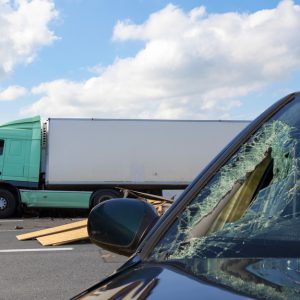
Truck accidents are those involving commercial semi-trucks, tractor-trailers, 18-wheelers or other large commercial vehicles. The accidents themselves may cause personal injury or death to other motorists, bicyclists or pedestrians. They may also cause property damage.
Truck accidents are responsible for 5,000 deaths per year. They also cause more than 60,000 injuries.
While truck accidents are vehicle accidents, they are very different from collisions that involve cars and other smaller vehicles. Truck accidents present a number of unique issues.
Size, weight and scope of the truck
The first unique issue is the size of trucks. Semis and 18-wheelers are very large and can be composed of multiple units. If they jackknife or roll over, they can spread damage over entire freeway lanes. The damage, of course, can consist of hitting vehicles and drivers. But it can also be caused by debris from the truck or other damaged vehicles. Multiple accidents as vehicles hit other vehicles because a truck blocked lanes is also possible.
Trucks can weigh up to 80,000 pounds. Cars, on the other hand, weigh about 3,000 pounds on average. So not only may a truck accident be bigger in scope than a car accident, it can do even more damage because of the weight of the truck.
Accidents can also cause a truck’s fuel to catch on fire, posing even more potential danger to surroundings, people, and property.
Other unique issues stem from the brakes used. All large trucks use air brakes, which can overheat if a truck has to stop quickly. If a truck slams on the brakes while going 60 mph, the temperature of the brake drum can rise to roughly 600 degrees Fahrenheit. Temperatures this high may cause malfunctions.
Who’s responsible for a truck accident?
Perhaps the most unique feature of truck accidents is the potential multiple layers of responsibility. When a car crash occurs, the driver could be at fault through failure to follow the law, error in operating the vehicle (did he or she stop in time?), or factors such as alcohol intoxication.
In a truck accident, all these factors can be causal. However, driver error is not always at issue in a truck accident. Other causes of the accident need to be explored as well.
Responsibility and liability for the accident might rest with the driver, or with the company that owned the truck, or with a contractor who was charged with inspecting, maintaining, or loading the truck. Contractors may also have been used to check driver backgrounds and conduct training sessions. Subcontractors are widely used as well.
Did the company maintain the truck properly? Accidents can occur because of poor maintenance to the vehicle. Did they contract out maintenance to another firm that didn’t do it properly or was not adequately experienced? Was the truck loaded properly? Accidents can occur because the load was not properly balanced. Was the driver under pressure to deliver, causing lack of sleep or use of stimulants?
Was the driver’s background adequately screened? Was the driver properly trained? That responsibility may rest with the company or a contractor.
An experienced Los Angeles truck accident attorney will know to ask all these questions. Trucks now carry an electronic onboard recorder (EOBR) that can answer many of these questions. Records can be requested to answer many more. Time is of the essence, since trucking firms move to defend themselves aggressively in many cases.
If you need a truck accident lawyer in Southern California
Truck accidents in Southern California cause death, injuries, and damage to property every year.
If you or a loved one was the victim of a truck accident, call us today. The Salamati Law Firm is experienced in truck injury cases. We will review your situation at no charge to you. Payment to us will only come from a final jury award or settlement amount.
Additional “truck accident legal issues” resources:
- Highway Loss Data Institute, Large trucks, http://www.iihs.org/iihs/topics/t/large-trucks/topicoverview
- NHTSA, Large Truck Crash Causation Study, https://www.nhtsa.gov/sites/nhtsa.dot.gov/files/18esv-000252.pdf